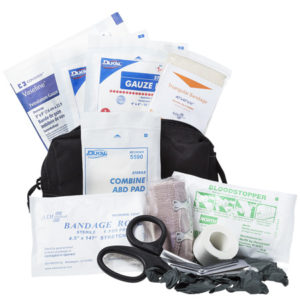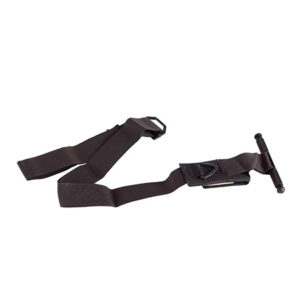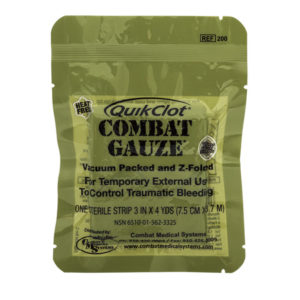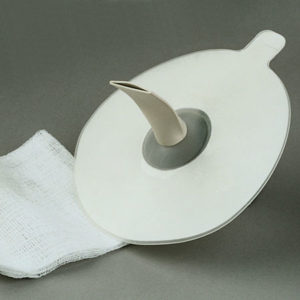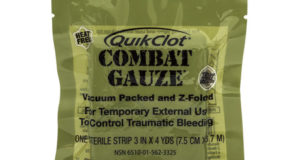Bayou Renaissance Man has asked on behalf of his readers, what essential items should be included in a range first aid kit, and where to procure them. It’s a question I get quite often, so I figured I’d share what I use, as well as a few caveats about rendering essential lifesaving care.
First, you can quite deep into the weeds stocking and carrying a trauma kit, so much so that the thing can become bulky and unwieldy to carry, making it far less likely that you’ll, you know… carry it. I used to carry a Thomas ALS Pack as my truck kit, essentially identical to the ones I used on an ambulance.
But hey, professional paramedic here. Most people don’t need a $1500 resuscitation backpack that weighs upwards of 50 pounds, nor are they qualified to use all the items therein, and even I would be reticent to do more than a similarly-equipped bystander would if I were responding in an area where my EMS employer doesn’t operate. I’m licensed as a paramedic in Texas and Louisiana, and large swathes of those states are covered by The Borg as the primary 911 provider. *If* I were in one of those areas and responded to a scene off-duty, I’d be relatively confident in my ability to hop on the responding Borg Cube and help out my fellow drones to the full extent of my scope of practice, even though I have no official duty to act…
… which brings us to the next point, duty to act. You see, there are four basic elements that must be proven in any medical negligence lawsuit. Without delving into a far longer medicolegal discussion, those four elements are:
- Duty to act
- Breach of that duty
- Damages occurred
- Proximate cause
Simply put, when you’re a medical professional, on-duty (whether paid or volunteer) you have a legal duty to provide care. IF you do not provide that care, OR you provide improper care (compared to what a similarly trained and equipped medical provider would do in that situation, as determined by 12 people too ignorant to know how to get out of jury duty), AND the patient had injuries, AND those injuries can reasonably be presumed to be a direct result of your negligent action or inaction…
… then you are guilty of negligence, and your lawyer tells the plaintiff’s lawyer, “I’m gonna write down a dollar sign and a number, and you stop me when I get to an acceptable number of zeroes…”
Remember now, ALL FOUR of those elements must be proven.
But as Suzy Soccermom or Joe Plumber or Randy Range Safety Officer, you have no legal duty to act. And when/if you do choose to act, you are protected by Good Samaritan Laws (because you have no duty to act) that offer you a great deal of civil immunity, and your actions will be judged by a “prudent layperson standard,” ie “what would a similarly untrained bystander do in that situation?”
Even I, a professional paramedic, would be judged by that prudent layperson standard when I’m off-duty, unless I assume a duty to act, by performing some paramedical-type stuff in a muddy ditch on the side of the road, or some dusty remote rifle range in the middle of nowhere. In that situation, I will be judged by my professional standards, the first of which is, “EMS PERSONNEL DO NOT OPERATE INDEPENDENTLY, WITHOUT PHYSICIAN MEDICAL DIRECTION.”
If I’m in some area not covered by The Borg (and hence, our medical director), to do so would put me very far out on a very thin legal branch indeed.
So YOU, as a bystander, are going to be judged very forgivingly on the actions you take, as long as you stay in your lane. You don’t have a duty to act, and nobody expects you to do trauma surgery in Shooting Bay #5 when Cletus violates more than his customary one of Colonel Cooper’s Four Rules of Gun Safety.
But in this era of YouTube instructional videos and online marketplaces that will allow you to purchase sophisticated medical equipment without so much as a certificate to demonstrate you know how to use them, you can put yourself into precarious legal footing rather easily.
Sure, you can watch a video on suturing and wound closure and practice a few times on a pickled pig’s foot, watch a video on intravenous cannulation and procure the proper supplies, buy a King airway and watch the instructional video, but if you start using that stuff in anything outside a TEOTWAWKI situation, you have stepped far outside the protective boundaries of the Good Samaritan Law, and are now practicing medicine without a license.
And you’re gonna get your ass sued, and rightfully so, because something will go wrong, and you don’t have enough education or training to know what you don’t know.
So I’ll boil it down to what you, a layperson, can do without running afoul of the tort (and maybe even the criminal justice) system: Putting stuff ON a victim, pretty much okay. Putting stuff IN a victim, not kosher.
There are some exceptions to that, like for example, wound packing in severe hemorrhage, but if you stay away from specialized invasive medical devices, your chances of getting sued lie somewhere between slim and none.
With that in mind, here’s what I recommend you carry in your range first aid kit, and this is the same basic equipment I give to all participants in my Shooter Self Care classes:
- (1) Pack of abdominal pads, 5″ x 9″, sterile
- (1) Bloodstopper bandage
- (1) Elastic bandage roll, 4″
- (1) Gauze roll, 4-1/2″ x 4.1 yds, sterile
- (1) Pair of black trauma shears
- (1) Triangular bandage, 40″ x 40″ x 56″
- (1) Gauze petrolatum strip 3″ x 9″
- (1) Adhesive cloth tape, 1″ x 10 yds
- (2) Gauze pads, 4″ x 4″
- (4) Pairs of gloves
- (1) QuikClot Combat Gauze
- (2) pack of chest seals (I prefer Asherman Chest Seals, but the HALO or SAM or any *vented* chest seal will do)
- (1) quality arterial tourniquet (I prefer the SOF-T Wide, but a *genuine* CAT is also fine)
All but the last three items are included in the Curaplex Self Care Kit, which will fit nicely into your range bag. I’d also add a PHLster Flatpack Tourniquet Carrier, for those times when you’re not carrying a range bag (defined as, “Anytime I’m clothed and armed.”)
You don’t have to buy them from the links provided; shop around and get the best price, but beware of cheap knockoffs. There have been issues with counterfeit CAT tourniquets breaking when used. If something is priced too good to be true, it probably is. Think of these kits as a good holster; it makes no sense to spend $500+ on a decent pistol, and then carry it in a cheap, piece-of-shit nylon sausage sack of a holster. Spend good money, because the price of a cheap one failing on you might be your life.
I’d add only a sports bottle of water, which aside from it’s obvious use, also makes a dandy means of flushing contaminants from your eyes.
That’s the equipment I recommend, but remember, gear is only a small part. Training is essential.
Take care, and shoot safely.
 Ambulance Driver Files A Day in the Life | Kelly Grayson
Ambulance Driver Files A Day in the Life | Kelly Grayson
